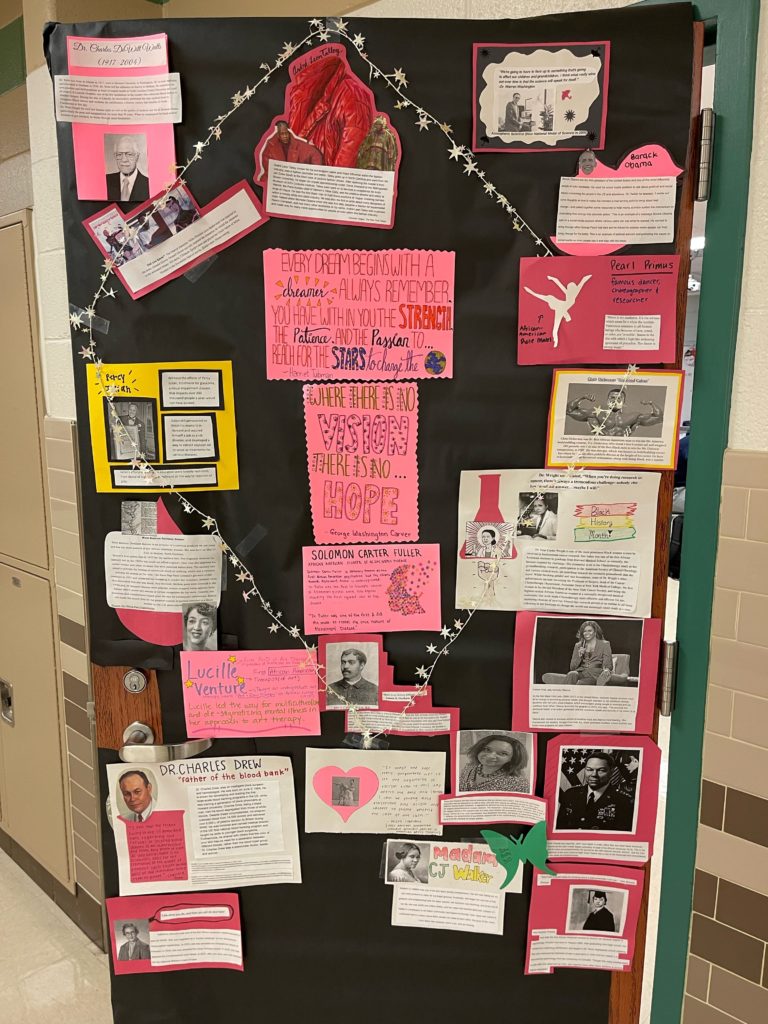This year marks the fourth year of my principalship at Atholton High School (AHS) in Columbia, MD, where I began my career as a teacher over 20 years ago. Back then, to celebrate Black History Month (BHM), I remember the whole school would gather for an assembly where students stepped, rapped, danced, and sang to honor Black history. While the assembly was fun, lighthearted, and the Black students had an opportunity to showcase their talents, I thought to myself, “We can do much better than this.” In some ways, this was a turning point for me; I wanted to become a principal so that I had more say in what happened at whichever school that I served.
Twenty-one years later, when I started as the principal of AHS, I was excited to make positive changes at this school that I loved. Among my many initiatives and goals, one was to call the members of the Black Student Association (BSA) to discuss the BHM assembly. When I sat down and talked to the students, they at first said they wanted to continue the tradition of highlighting how the Black community has influenced the entertainment industry; they wanted to keep the assembly focused on singing, rapping, and dancing. Instead, I presented a challenge to them: With a captivated audience of the entire school, teach them something. I felt that it was incumbent upon these extremely bright, creative Black student leaders to teach their peers something new about Black history and culture. Students should leave the assembly thinking, “Wow! I didn’t know that.”

After the initial groans from the students that I was changing too much or making it less fun, they came back to me with the most astounding ideas. For that year, they wanted the assembly to focus on Historically Black Colleges and Universities (HBCUs), why they’re important, how they started, and how they differ from predominantly white institutions. They invited HBCUs to hold a college fair at our school in conjunction with the assembly. And ever since that year, our BHM assembly has been known for its emphasis on learning rather than just entertainment.
Another year, BSA students decided to explore “Black History Through the Decades.” The assembly focused on important parts of Black history throughout the last 60 years. As part of the assembly, students also dressed up in costumes in the style of clothing from a particular decade. The audience was delighted to see how fashion trends (poodle skirts, bell bottoms, etc.) have dramatically changed over time.
This year, to honor how Black people have made significant contributions to many industries and professions, the BSA chose “trailblazers” as their theme. They wanted the whole school to be involved, so each content area and class has recently been learning about Black trailblazers in their subject area, and this week, they will participate in a door decorating contest to honor those historic leaders. I think linking to the core curriculum in this way enables the whole school to feel invested. And invested they are! I walked into a Spanish class a few weeks ago, and the students were discussing famous Afro-Latinx trailblazers.
That type of discussion shows me the positive impact our Black History Month celebrations are having on the entire school—and throughout the school year. Although February is officially Black History Month, it’s not the only time educators and students can and should be honoring Black history.

